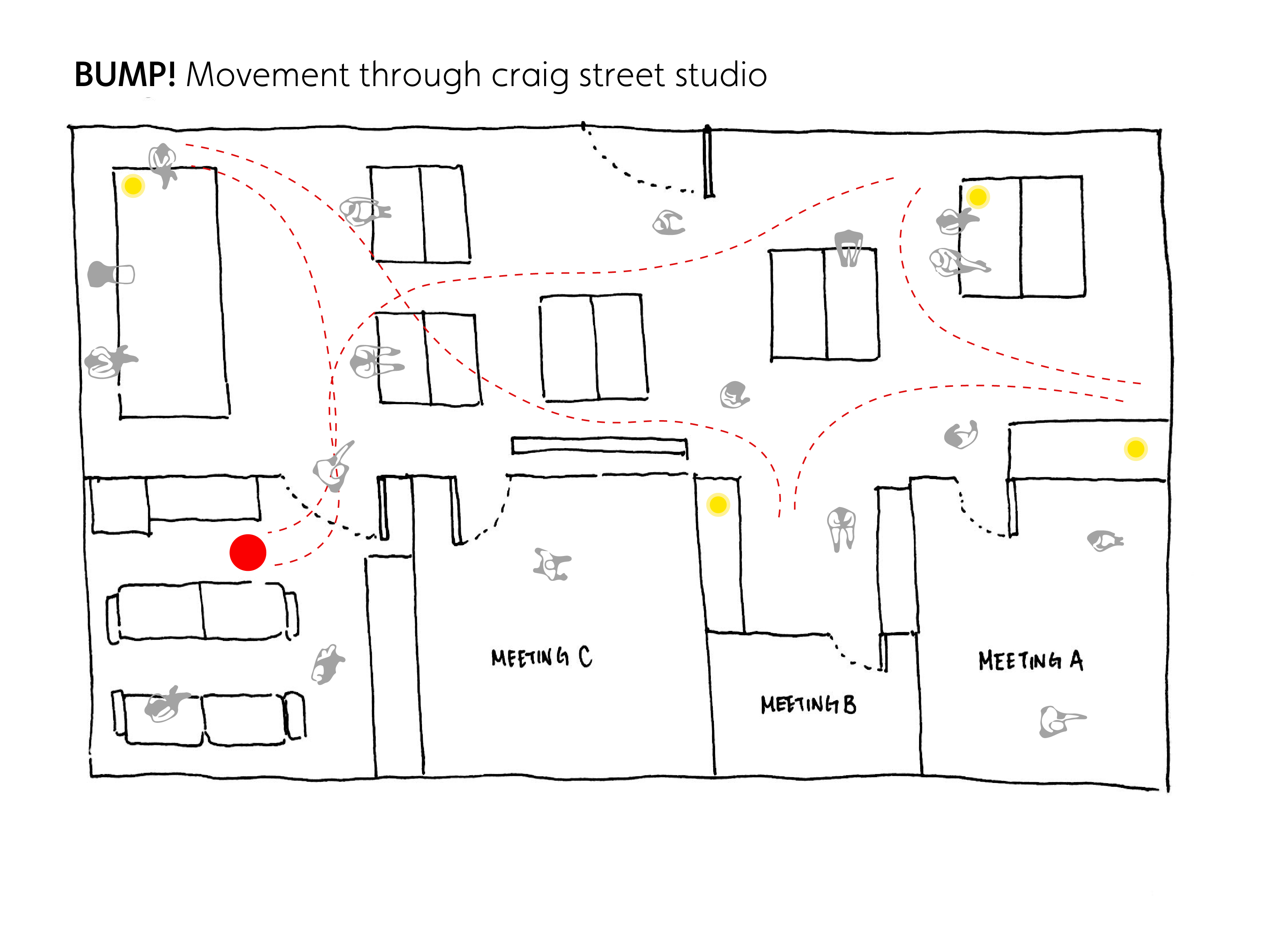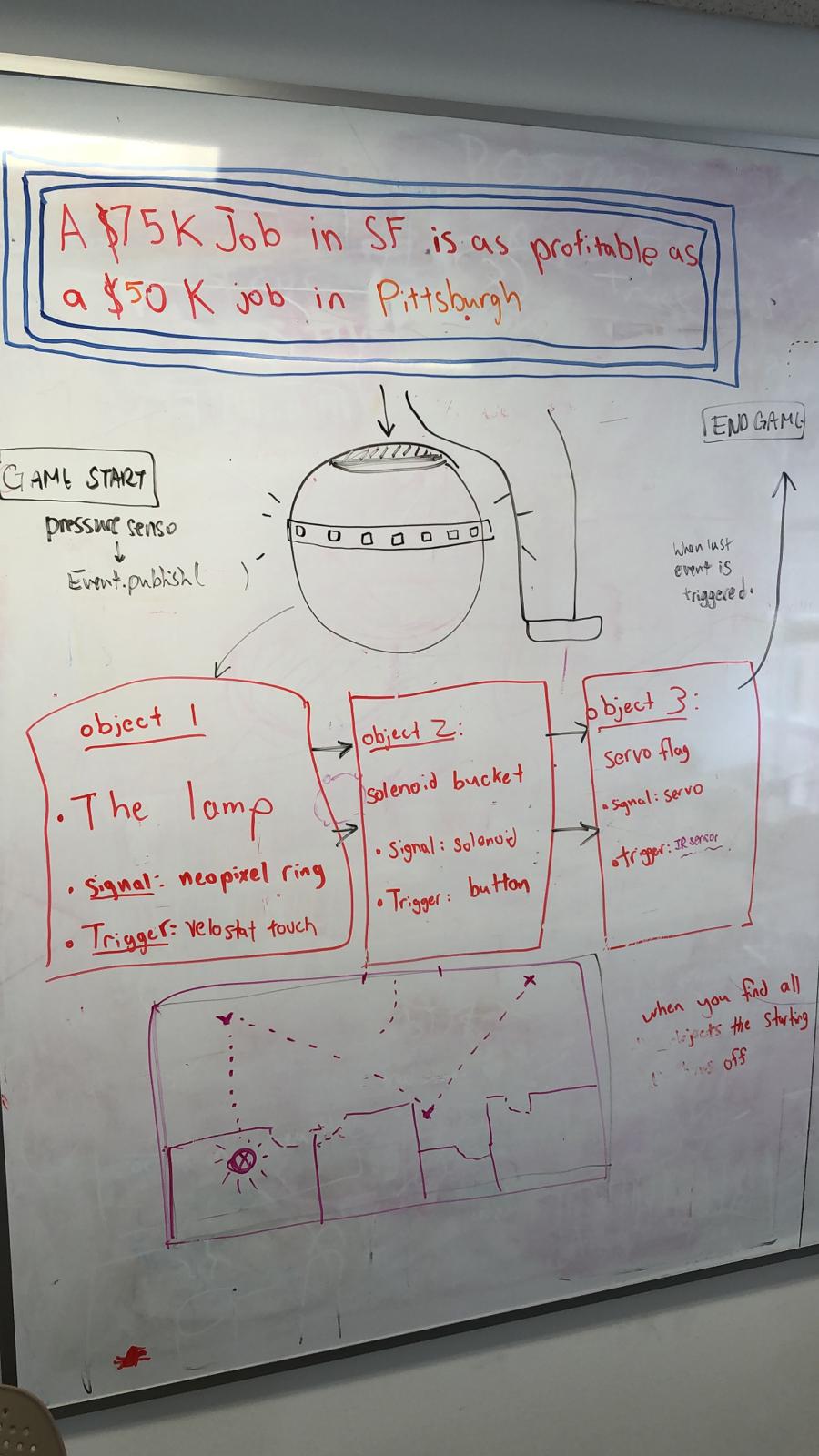Goal:
We wanted to create a shared experience within the studio to help diffuse stress, create fun, and get students active in the space. We’ve sought to do this through a game of hide and seek with connected objects in the studio to gamify the cleanup experience.
Vision:
We were seeking to create a quick, easy game that allows students to disconnect from long meetings and get the blood flowing again. We wanted to gamify otherwise mundane activities that people aren’t otherwise motivated to engage in.
Design Process:
We used a rapid brainstorming technique to generate words to fit a script to help guide our ideas. We used a randomized cycle website to get unique combinations of the words we came up with and worked in pairs to develop concept ideas based on these combinations. We sought to use visual cues with Neo-pixel strips to signal elements of the game to those playing, as well as sound once the code was flashed.
Prototyped Solutions:
We initially developed a connected system to send and receive events with a musical chairs game through an Alexa skill app. We then pivoted to a hide and seek concept game with location sharing, connected objects in the studio that still use the visual and audio cues from our initial concept with sent texts to confirm the event being received and starting the game.
Using the big ball seat as a starting point with a velostat pressure switch on top, it sent a signal through the particle cloud to trigger the other hidden objects. The others being a light with a neopixel attached, a buzzerbox, and a flag stand that visually signals the user.


